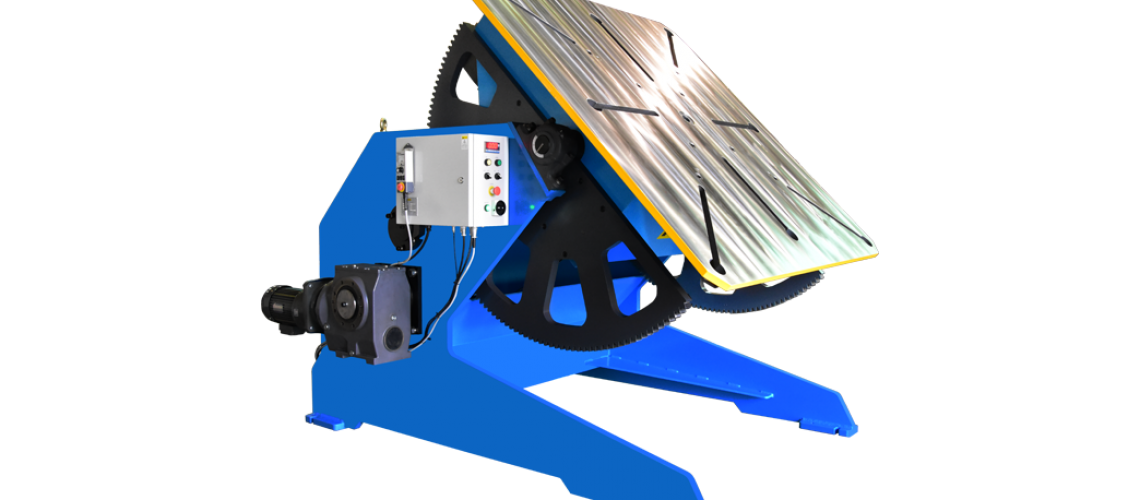A welding positioning machine is a device that rotates a 360 degrees spin that allows a welder to stand in one position and constantly work on a level surface. It adds comfort for the welder who must perform on odd shaped parts, such as tubular pipelines. Welding positioning machines prevent worker fatigue and increase productivity due to the lack of worker movement that is necessary to complete a job. This method also provides consistently high-quality welds since no overhead or vertical runs are involved.
How does a Welding Positioning machine work?
Welding positioning machines effectively operate by gripping onto a pipe joint or valve and rotates the work- piece as needed so the welder can continuously weld a joint in a flat position with no break in the process. This enables the welder to keep the weld puddle in joint, instead of having to maneuver the torch or electrode holder.
Welding positioning machines are practical for increasing welding deposition rates and reducing rejection rates because they allow better accessibility of the welding sea on the pipeline. A welding gripper or welding positioner assists the operator in welding at faster speeds than are possible with a manual or semi-automatic setup.
When operating a welding positioning machine, safety is of paramount importance. It is essential to ensure your welding positioner is always secure to a flat, stable surface. Bench-top welding positioning machines should be secured as well.
It is also important to check the manufacturer specifications for your welding positioning machine. The motor and control are based on the size and speed required for the welder to perform, and the manufacturer’s specifications will inform you whether the weld positioner can handle the operation you need to perform.
A ground current should also be connected to the welding positioning machine during welding. Without it, electrical parts can be damaged. You should also ensure that the positioner is compatible with the electric current produced by the welding process.

